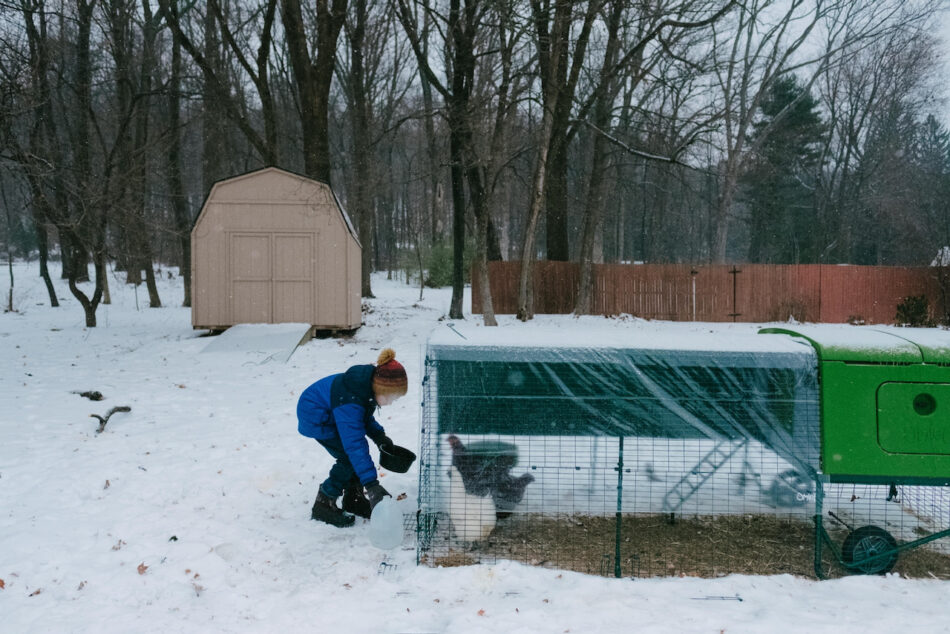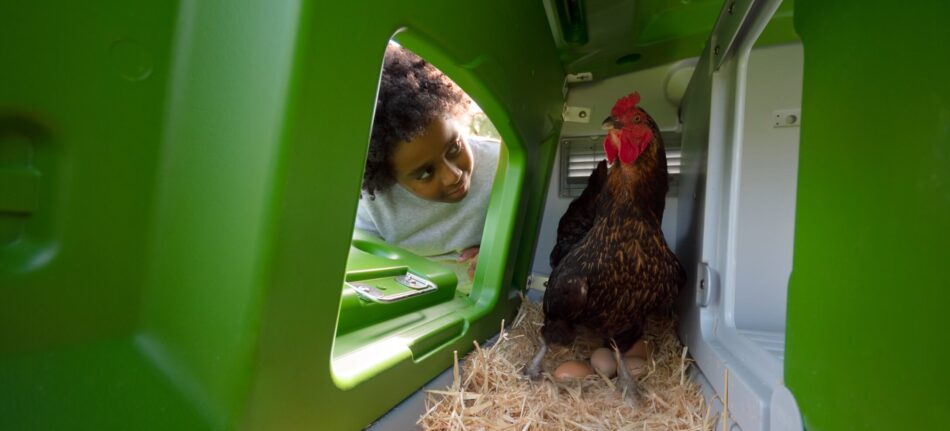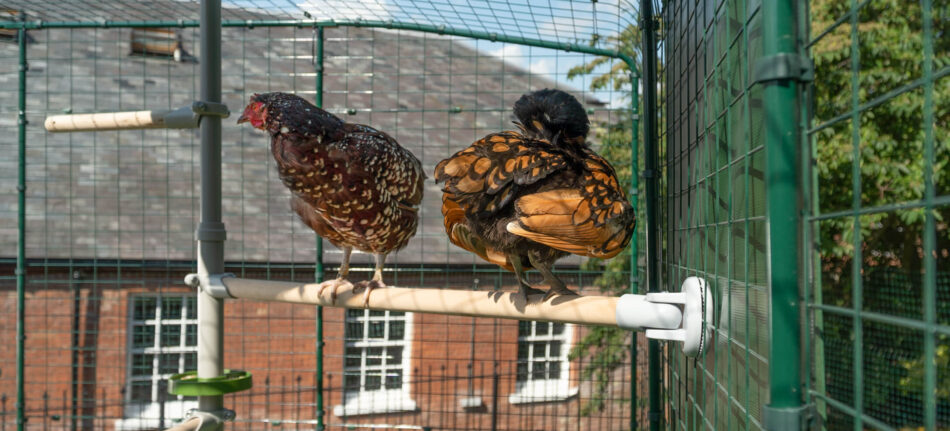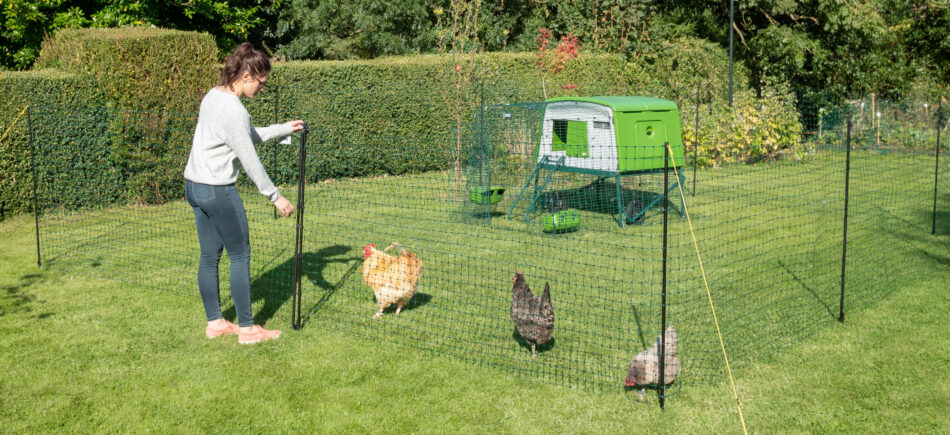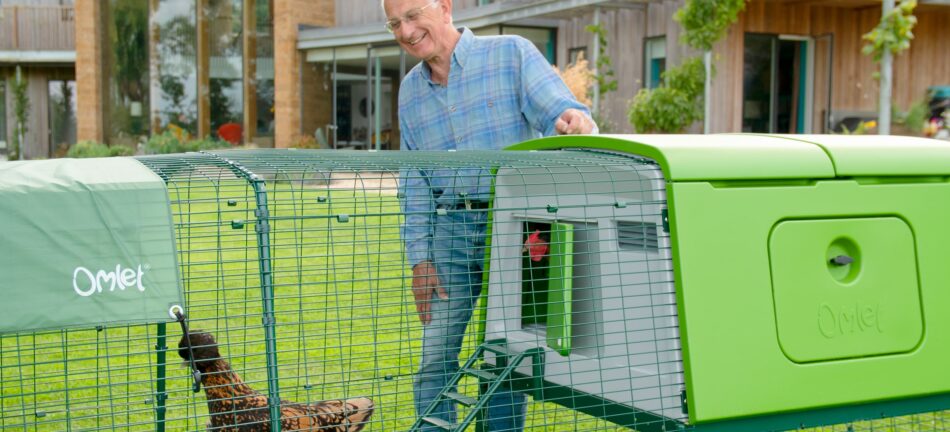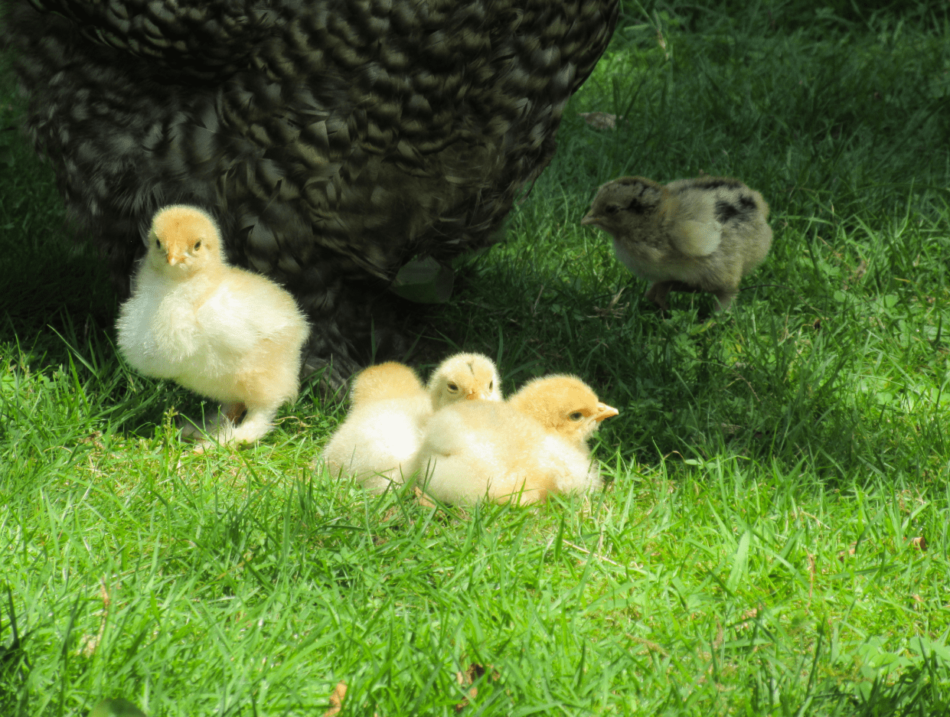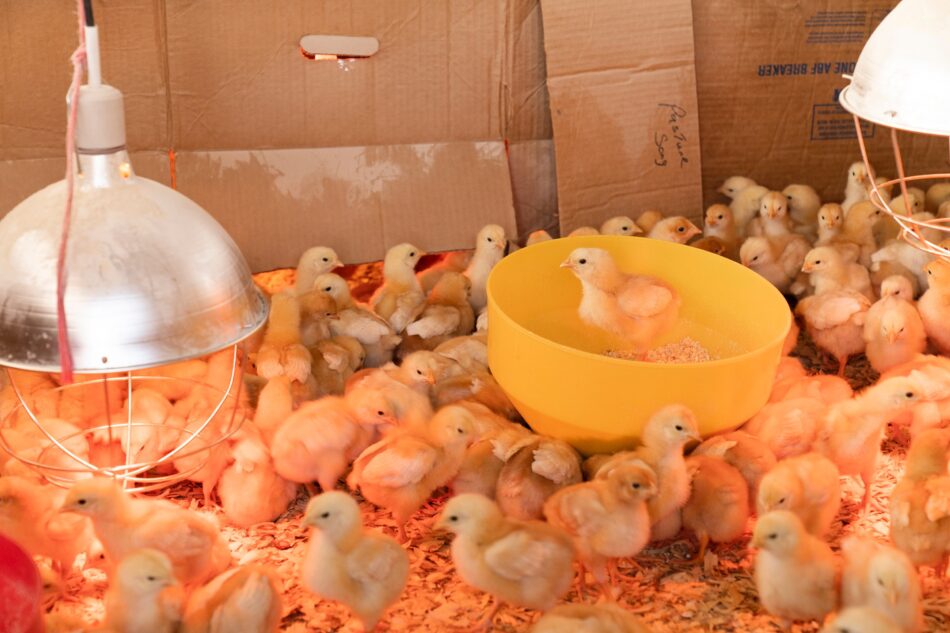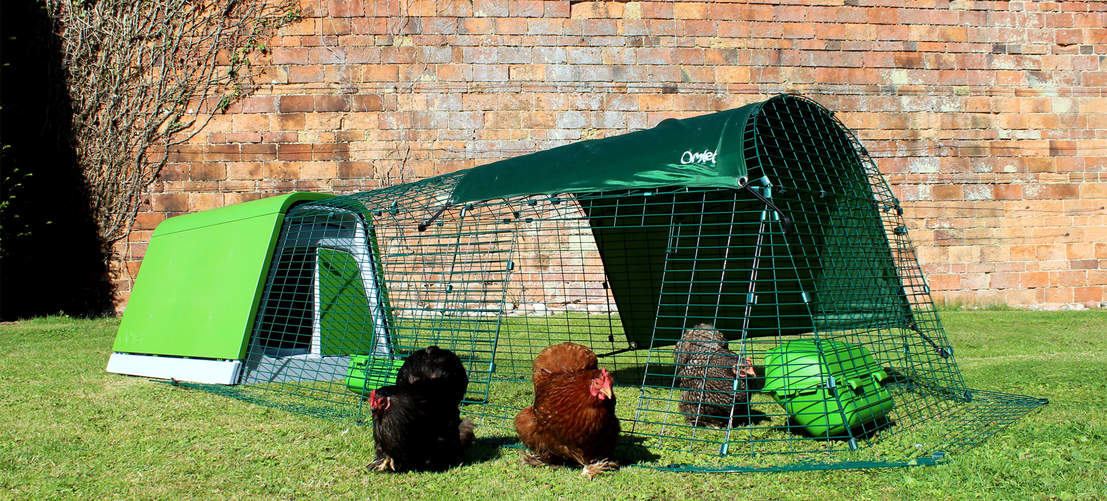Everything You Need To Know About Avian Flu
This post has been reviewed and updated on Wednesday 2nd November 2022.
Autumn and winter can be amazing seasons to be a chicken keeper, but while you don’t have to worry about red mites and other heat loving pests to the same extent, the colder months pose other challenges. Besides making sure your chickens are warm and dry, the risk of avian flu increases in the winter months, and you will need to take precautions to make sure your hens stay fit and happy.
We have teamed up with the Department for Environment, Food and Rural Affairs (Defra) to give you a comprehensive guide of what you as a backyard chicken keeper can do to help minimise the spread of bird flu and keep chickens across the country healthy, including some FAQs.
What is Avian Flu?
Avian flu, or bird flu, is a type of influenza that spreads among birds. The virus is not specific to chickens and poultry, any bird can get infected, including wild birds such as birds of prey, geese, and different types of gulls. Avian influenza viruses are classified according to their ability to cause severe disease (pathogenicity) in birds as either highly pathogenic or low pathogenic. Highly pathogenic avian influenza viruses (HPAI) can cause severe disease in susceptible birds and low pathogenic avian influenza viruses (LPAI) generally cause mild disease or no disease at all.
Signs of avian flu in chickens
Chickens with avian flu may display various clinical signs. They may be less active than usual, will lose their appetite and show abnormal nervous signs like head tremors, lack of coordination, or circling. Affected birds will have a drop in egg production and show breathing difficulty with open beaks and runny eyes. Eventually their combs and wattles will become swollen with a blue discolouration.
In most instances however, birds affected with high pathogenic avian influenza will just be found dead with no other prior indications of being ill. Poultry affected with low pathogenic strains of avian influenza may show signs of coughing, sneezing (snicking) and often get green diarrhoea. Unfortunately, many of these bird flu signs are not specific and can be associated with other poultry ailments. So if you have any doubts, please contact your vet for advice.
It can take several weeks for an avian flu outbreak to spread throughout a flock. Some infected birds may exhibit no clinical signs but are still potential virus carriers and can spread it to other birds. Others may get very ill and die very quickly.
Avian Influenza is a notifiable disease, which means that if suspected must be reported to the Animal and Plant Health Agency (APHA). You should always speak to your vet if you’re concerned about the health of your hens, but it’s particularly important if there are local outbreaks of bird flu.
What is the latest situation?
So far this autumn/winter avian influenza has been confirmed in commercial poultry at premises in England. Avian influenza has also been found in captive birds in England.
Avian flu can spread by movement of infected birds, from bird-to-bird by contact with contaminated body fluids and faeces, or through contaminated objects and surfaces. Although an avian influenza outbreak can occur at any point in the year, the UK typically faces a seasonal increase in the risk of an avian flu as wild birds start to migrate. Infected migratory birds can then infect wild or kept birds, resulting in local transmission and contamination of the environment e.g., fecal and feather contamination of poultry ranges, and contamination of bedding stored outside. This is why the risk of avian influenza is not solely connected to the presence of infected migratory wild birds.
As of Monday 7th November 2022, the United Kingdom’s Chief Veterinary Officer has agreed to bring in new housing measures across the whole of England to minimise the risk of the avian influenza spreading amongst poultry and captive birds.
The housing measures mean that it is a legal requirement for all bird keepers (whether they have pet birds, commercial flocks or just a few birds in a backyard flock) to keep their birds indoors, and to follow strict biosecurity measures to stop the spreading of the disease.
These new housing measures will regularly be reviewed.
Preventing outbreaks
Biosecurity is an essential defence against diseases such as avian influenza, and is key to limiting the spread of avian influenza in an outbreak.
All bird keepers should make sure they keep up to date on the latest avian influenza guidelines on the gov.uk, gov.scot and gov.wales websites. There you will find details of biosecurity measures you should take as good practice for the health of your birds, as well as details of things you must do due to the Avian Influenza Prevention Zone (AIPZ) being in force across Great . Some examples include:
Keep things clean
- Wash your hands before and after tending to your birds.
- Clean and disinfect your footwear after visiting the hens. Disinfectants get deactivated by mud and other organic matter, so it’s best to wash off any dirt before dipping your boots in a Defra approved disinfectant. Dilute disinfectant to the correct rate in a tub or bucket, at least ankle deep, and cover with a lid when not in use.
- Alternatively, you can have specific chicken keeping footwear that you store in a watertight box next to the entrance to your chickens’ enclosure that you change into before going in to see the hens.
- Limit the number of people and other pets who go to see the birds.
- Clean and disinfect surfaces regularly. If you have a plastic chicken coop like the Eglu Cube, you can be confident you will easily be able to get to all corners of the coop in no time. Also make sure you clean and disinfect any equipment or accessories on a regular basis.
- Consider concreting areas around the entrances to bird accommodation or putting slabs down so it is easier to clean.
- Store bedding and feed safely to minimise the risk of contamination, as well as pests.
Food, water, and wild birds
- Do not feed wild birds in the vicinity of your chickens.
- Use bird scarers to keep wild birds away.
- Clean up any spilled chicken feed to avoid attracting wild birds or rats and mice. Feeders like chicken peck toys will keep the feed off the ground and minimise the risk of uneaten feed being left on the run or in the grass.
- Keep your chickens’ water and feed undercover or on the run to prevent wild birds from accessing it.
- Prevent your free-range hens from accessing ponds or other areas commonly visited by wild waterfowl.
- If you keep other poultry, you should separate ducks and geese from your hens. These species don’t show any signs of disease, but can pass the virus on to chickens.
Prepare for winter and outbreaks in your area
Housing
As of 7th November 2022, housing of all kept birds in England is now a legal requirement to keep them separate from wild birds. It’s important that you have somewhere to keep your birds safe and happy. It should be large enough that all chickens have enough space to carry out their daily activities, safe from predators and wild birds, as well as sheltered from wind and rain.
A coop connected to a large walk-in chicken run is a great solution, but you can also create a DIY temporary home for your flock by adapting any existing buildings you have, such as a shed or a garage. Whichever you choose, make sure to make it as safe and comfortable as possible for your chickens by:
- Checking the roof for leaks
- Clearing the roof and surrounding area of moss and vegetation, which can attract wild birds searching for insects.
- Blocking up holes that could let small wild birds and rodents in or cover with 25mm mesh.
- Ensuring there is good ventilation and natural light.
- Ensuring guttering and drains are clear to prevent flooding.
Keep records
Whether you are selling or just giving to friends and family you must keep records of poultry and egg movements, including dates, quantities and where they were going. A veterinary inspector will ask to see these in the event of an outbreak.
Register your birds
A great way for hobby or pet chicken keepers to stay up to date with the latest avian influenza situation is to register their birds with the Animal and Plant Health Agency. It’s a legal requirement for those with 50 or more birds, but people with smaller flocks can fill out the voluntary registration form on gov.uk.
It’s worthwhile because:
- You will receive text or email alerts if there is a disease outbreak in Great Britain.
- You will receive text or email alerts if you fall within a disease protection or surveillance zone. These are 3km and 10km zones around the infected premises where additional biosecurity is needed.
- By knowing what the disease situation is you can take action to protect your flock.
- By taking action to protect your flock you will also help to protect GB’s poultry industry and the health and welfare of GB poultry.
Frequently asked questions
What is avian influenza?
Avian influenza is a virus that normally affects birds. There are two types of avian influenza virus, highly pathogenic (HPAI) and low pathogenic (LPAI). The highly pathogenic strain is more serious. Low pathogenic avian influenza can mutate into a highly pathogenic strain and therefore swift action must be taken as quickly as possible to stop the disease spreading.
What are the main signs of avian influenza?
With the highly pathogenic strain of avian influenza birds are often just found suddenly dead. However common clinical signs include:
- Lethargy and weakness
- Lack of appetite and not drinking
- Drop in egg production
- Green diarrhoea
- Head tremoring
- Abnormal posture, stance, and movement e.g., circling
- Mouth breathing, gaping
- Sneezing, coughing and snicking
- Blue combs and wattles
- Leg bruising
How does avian influenza spread?
The disease typically spreads through the movement of infected birds, from bird-to-bird direct contact and indirectly via contaminated fluids, faeces, vehicles, clothing, feed, or bedding. Wild birds are also a cause of many outbreaks in kept birds.
I’m not a poultry farmer and only keep poultry as a hobby or as pets, why do I need to worry about avian influenza?
Between October 2022 and November 2022 there were 85 confirmed avian influenza (HPAI) H5N1 cases in England. Cases have also been confirmed in other parts of Great Britain.
If avian influenza is identified in birds kept as pets or as a hobby, it would still be necessary to put bird movement and trade restrictions in place. This is why it is vital that all poultry keepers, whether you keep hundreds of birds or just a couple of pet chickens, take action to improve biosecurity, to protect both the health of your birds and the livelihoods of poultry farmers in the UK.
When should I start worrying about my chickens having avian influenza, and what should I do if one of them gets it?
If your birds look unwell it’s important to contact your vet. Avian influenza (bird flu) is a notifiable animal disease. If you or your vet suspect any type of avian influenza in poultry or captive birds, you or your vet must report it to the Animal and Plant Health Agency immediately. Failure to do so is an offence.
You can call the Defra Services helpline on 03000 200 301 (England) or 0300 303 8268 (Wales). If you live in Scotland, contact your local field services office.
What does biosecurity mean?
Biosecurity refers to things we do to prevent the introduction and/or spread of harmful organisms (e.g., viruses and bacteria) to animals, people, and plants, to minimise the risk of transmission of infectious disease. Some examples of good biosecurity include washing and disinfecting clothing and footwear before entering your birds’ enclosures and keeping wild bird contamination out.
What is the difference between an Avian Influenza Prevention Zone (AIPZ) and housing measures?
In an AIPZ, additional biosecurity measures are required by law to help protect your birds from avian influenza, and this may require you to house your birds, depending on the risk level at the time. The Government communicate these housing measures to poultry and captive bird keepers if or when they come into force.
Housing measures require you to by law that keep your birds permanently indoors, unless this is completely impracticable (for example if you keep large numbers of ducks or geese, where it may be a welfare issue to keep them inside due to their inability to exhibit natural behaviours). In these instances, alternative measures must be taken. Ducks and geese should be kept in fully netted areas or temporary netted structures, where practical. All feeding and watering should take place under cover.
If housing measures are not in force, an AIPZ will require free-ranging birds to be kept in a fenced area to minimise their contact with wild birds. Other biosecurity measures include keeping your birds’ food and water undercover, cleaning up evidence of wild birds in your birds’ fenced area (for example feathers and faeces), putting netting over ponds and cleansing and disinfecting footwear before and after tending to your birds. However, high standards of biosecurity should be maintained as good practice for the health of your birds even when an AIPZ is not in place.
Full details of the requirements all bird keepers must follow under the AIPZ currently in force across England are available together with biosecurity guidance and information on the latest avian influenza situation are available at:
- England: https://www.gov.uk/guidance/avian-influenza-bird-flu
- Scotland: www.gov.scot/avianinfluenza
- Wales: https://gov.wales/avian-influenza-bird-flu
If housing measures are in force, do I need to keep my hens shut in at all times?
If housing measures are in place then yes, birds must be always kept undercover. This is to protect them from disease.
What type of housing is suitable to house my birds in?
When poultry are housed, they must be completely undercover. You can buy purpose-built poultry houses, or you can make use of existing buildings, such as barns, farm sheds, outbuildings, garages, and garden sheds and adapt these for your birds. Or build a lean-to on the side of an existing structure.
If your housing is too small to permanently house your birds, you could extend it by creating a covered run from tarpaulin or a gazebo and use 25 mm mesh for the sides to prevent small wild birds from getting in. Straw bales can also be used to make a temporary poultry house with a tarpaulin roof.
It is important that your birds have access to natural light and that there is good ventilation. Any openings must be netted with 25mm net to prevent wild birds from gaining access.
If you keep ducks and geese, they must be kept separate from other poultry species as waterfowl often don’t show any signs of disease but can pass the virus on to chickens.
What actions can I take now to protect my birds from avian influenza?
Maintain your birds’ housing by:
- Checking the roof for leaks
- Clearing the roof and surrounding area of moss and vegetation, which can attract wild birds searching for insects.
- Blocking up holes, which could let small wild birds and rodents in, or cover them with 25 mm mesh.
- Ensuring there is good ventilation.
- Ensuring guttering and drains are clear to prevent flooding.
Also:
- Clean and disinfect (using a government approved disinfectant) footwear and equipment before and after tending to your birds, as well as all hard surfaces.
- If you sell any of your chickens or their eggs, keep records of movements.
- Store bedding inside to reduce the risk of contamination.
- Make your premises unattractive to wild birds. Use bird scarers, foils, or streamers.
- Remove any spilled feed regularly and control rats and mice.
- Place your birds’ food and water in fully enclosed areas that are protected from wild birds.
- Put fencing around outdoor areas where birds are allowed and limit their access to ponds or areas visited by wild waterfowl.
- Where possible, avoid keeping ducks and geese with other poultry species.
Do I need to change water/food more than usual if cases of avian influenza are confirmed in the UK?
Food and water should be refreshed/changed regularly for the health and welfare of your birds. To prevent infection with avian flu, the most important thing is that your birds’ food and water cannot be accessed by wild birds. Store food and water undercover away from wild birds. If housing measures are brought in, then your bird’s food and water must be stored indoors. It’s important to clear up spilled feed regularly to avoid attracting mice and rats, as they could spread the avian influenza virus on their feet.
How can I make sure my chickens aren’t in distress when they are confined and can no longer roam free?
If, due to a further increase to the risk avian influenza spread, government bring in mandatory housing measures, warning will be given in order for you to start getting your birds used to being inside before the rule is mandatory.
Once housing measures are in force, ensuring fresh water and appropriate amounts of feed are available and keeping their bedding clean are the main priorities. Chickens spend most of their time awake foraging (i.e. pecking and scratching), therefore, it’s important to provide things that encourage that behaviour. But scatter feeding can encourage vermin, so cat litter trays can be used to scatter food in, or they can be placed under feeders to catch the mess. Other ideas to enrich your birds’ environment include:
- Feeding whole oats, wheat, corn, alfalfa, maize, barley, peas, and carrots, but make dietary changes gradually.
- Mashing feed to increase eating time.
- Adding grit to litter, so birds can scratch and carry out natural foraging behaviours.
- Add different levels, as chickens like to go up high. Try stacking straw bales or adding items of ‘furniture’, such as ladders and swings that they can perch on. Perches can also help avoid overcrowding.
- Hang items to peck at, such as pecking blocks.
- Provide a dust bath.
- Chickens may also enjoy parrot puzzle feeders or even dog puzzle feeders!
- Mirrors can add interest, and moving them around regularly adds more interest.
- Keep surfaces soft, such as wood shavings or sand.
- If you keep ducks or geese, fill troughs or old bathtubs with water to allow preening.
- Play classical music or the radio!
It’s a good idea to vary enrichment regularly, as it otherwise loses its novelty. Be careful about adding new items to the chickens’ enclosure that could be contaminated with the virus, such as leaves or branches from the garden. Contact your vet if you have concerns about the health and welfare of your birds.
How do I get the correct updates regarding guidelines and regulations?
All information you require about avian flu can be found on gov.uk, gov.scot and gov.wales, including information about the relevant legislation.
How can I keep up to date with the latest avian influenza situation?
Gov.uk, Gov.wales and Gov.scot have all the latest information regarding the avian influenza situation in Great Britain.
It is also advisable to register your birds with the Animal and Plant Health Agency (APHA). This is a legal requirement for people who keep 50 or more birds, but if you keep less than 50 birds it’s still worthwhile as:
- You will receive text or email alerts if there is a disease outbreak in Great Britain (GB).
- You will receive text or email alerts if you fall within a disease Protection or Surveillance Zone. These are 3 km and 10 km zones around the infected premises where additional biosecurity is required.
- By knowing what the disease situation is, you can take action to protect your birds.
- By taking action to protect your birds, you will also help to protect GB’s poultry industry and the health and welfare of GB poultry.
This entry was posted in Chickens
